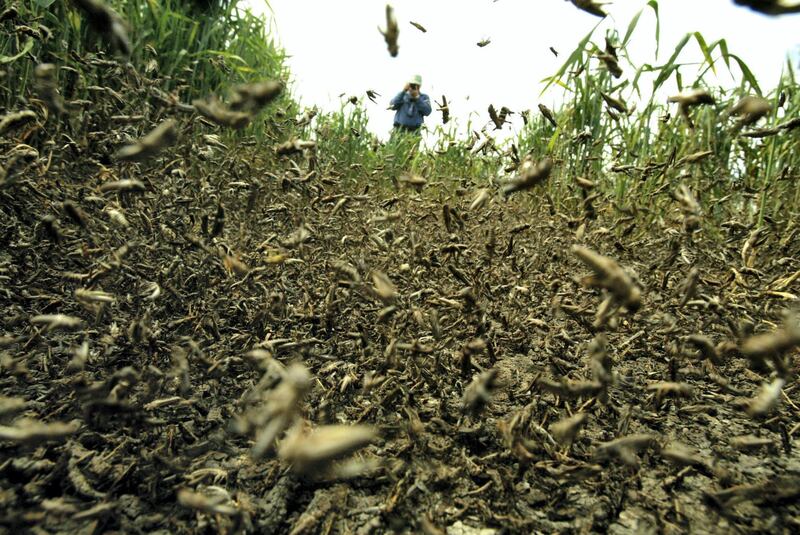An instrument of God's wrath in both the Quran and the Bible, schistocerca gregaria, the desert locust, has posed an intermittent threat to human beings across the region for thousands of years. Under the right conditions, this species breeds rapidly, forming swarms capable of stripping entire fields of crops in minutes. Each can daily consume its own weight in food. A swarm of 40 million is capable of eating enough in one day to feed 35,000 people.
As the residents of Abu Dhabi's Al Dhafra region are discovering this week, locusts can also travel vast distances – swarms regularly cross the Red Sea from Africa to Arabia. Yet, although feared by farmers, our relationship with the locust is more complex than seeing it as a simple pest. For generations, desert tribes regarded locusts as a delicacy. In hard times they were a lifesaver. In 2013 the UN Food and Agriculture Organisation even advocated that the modern world should consider the protein-rich insect as part of the solution to increasing global food shortages. And the curse of the desert locust has had another curiously beneficial effect. Because swarms can fly up to 150km a day and travel rapidly from country to country, dealing with them requires a swift, co-ordinated response – a necessity that has brought out the very best in international collaboration.
Since 1978, more than two dozen countries vulnerable to locusts have worked together under the umbrella of the UN’s Food and Agricultural Organisation to fight the common threat. The FAO’s Desert Locust Information Service uses satellites and real-time, on-the-ground surveillance carried out by field teams from member states to issue warnings and co-ordinate international responses. Since December, Sudan, Saudi Arabia, Eritrea and Egypt have carried out ground and aerial spraying of insecticides over vast areas. All affected nations are meeting this week in Jordan to discuss their next moves. Like locusts, the regional response knows no political borders. As such, it is a model of co-operation, to which a world failing to come up with a unified response to climate change and other global problems would do well to pay heed.





